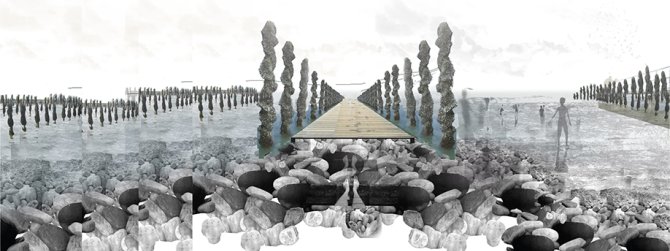News
Naiara Valcarlos wins the Folkert Hellinga MSc Award 2014
During the annual meeting (May 7th) of Netwerk Land en Water the Folkert Hellinga MSc Award was handed to Naiara Valcarlos. With her thesis 'Murmur of limits: Evoking the sensuous encounter between ecological phenomena and humans.' she had the courage to develop her own theory, illustrated with beautiful artistic illustrations.
personal webpage: http://naiaravalcarlos.weebly.com/

Abstract: The research directs towards unveiling the human perceptible realm in relation to nature, that occurs in a certain scale. This is a scale not based on graphic or numeric measures, rather is in eternal motion, since it is a scale in which the perceiver and the environment are interdependent, in continuous transformation, and, embodied. When the embodiment takes place in nature encounters a world in perpetual movement; nature manifesting in different rhythms, and humans engaging with certain phenomena: the ones that express within our time-space frame. In the attempt of unveiling this sensuous encounter with phenomena of nature we can only look for a scientific method that relies on the body and perception as measuring tools of this realm, the body as sensuous data generator. And phenomenology becomes the method in order to describe what consists of this sensuous encounter. An extensive study of the landscape is done under phenomenological lenses. In this loop of knowledge generation we come up with the relevance the limit has for aesthetic experience. The limit is represented by the dike in our case study, and the dike is an ensemble of rhythms: the rhythms of nature and the rhythm the materiality of the dike provides; and facilitator of murmur of limits: metaphor that evokes the interaction, the dialogue the elements and the rhythms of nature establish, which is the essence of the aesthetic experience in the site study, Schouwen Duiveland. A new interpretation for the dike arises as facilitator of aesthetic experience. Together with an aesthetic strategy that pleas for contextuality and materiality of the site, focusing on the processes and dynamics that conform the landscape, new ways for enhancing its experience are tackled by means of design. Design that uses metaphors as design material, underlining the relevance of aesthetic language as design material.